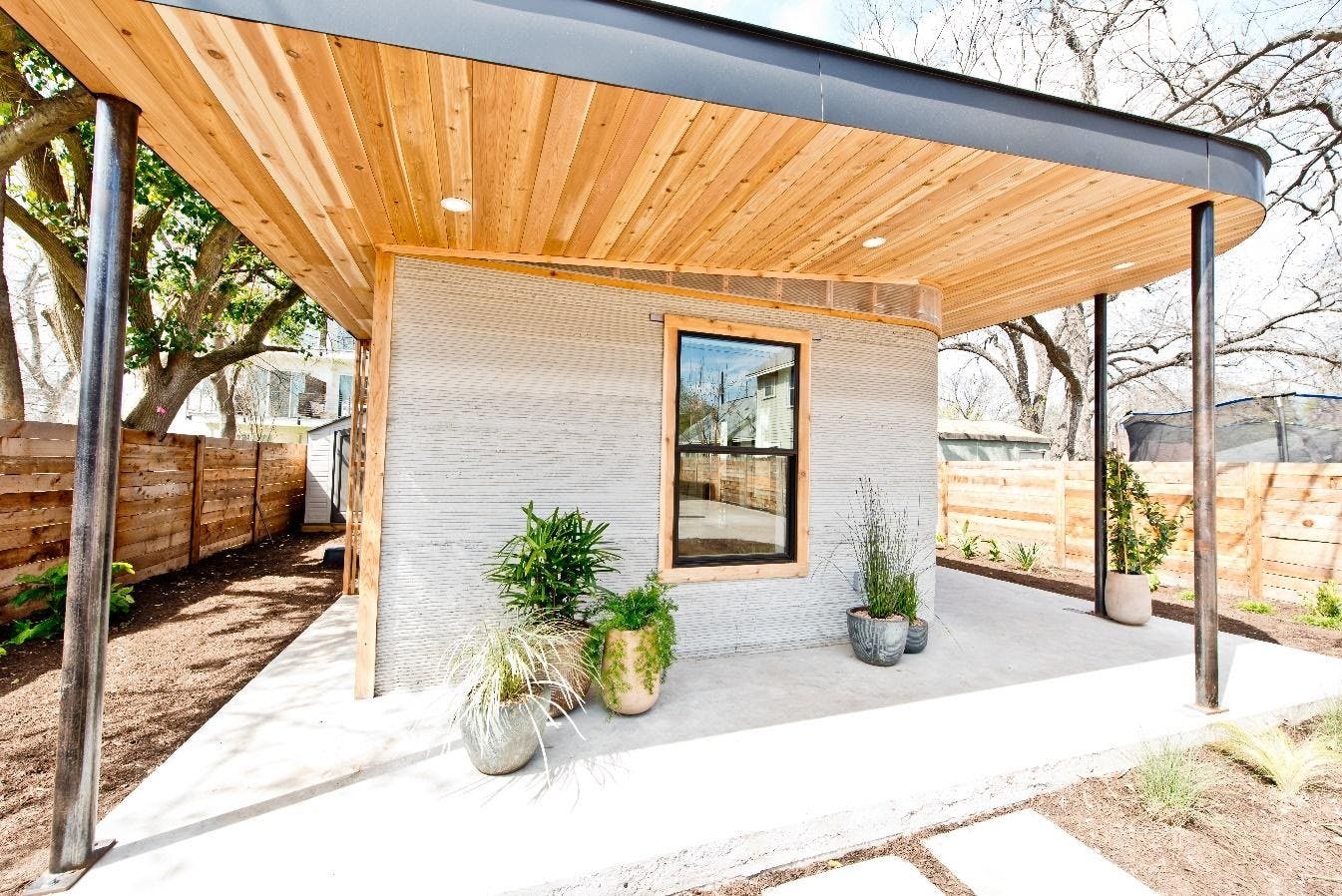The 3-D printer has helped our world move forward with new, affordable designs for everything from car parts to custom tools for industrial use. The housing industry is now getting in on the action with the development of 3-D printed homes.
Using a special formula of quick-drying cement, companies are now building some of the first homes to help address affordability and homelessness here and abroad. In addition to accessory dwelling units, modular construction and other affordable options, 3-D printed homes allow people to find private, contemporary shelter at a fraction of the cost.
Icon, a digital construction company based in Texas, became the first in the U.S. to build a printed home. The approximate 350 sq. ft. house – built in 2018 in Austin – was a proof of concept that has since led to the planning and development of hundreds of homes in at least four countries.
“Here’s a company that really has the opportunity to change the world,” said Constance Freedman, Founder and Managing Partner of venture capital company Moderne Ventures, one of Icon’s financial backers. “For about $4,000, they can 3-D print an 850 sq. ft. home in 24 hours.”
How does it work? A nozzle attached to a robotic “printer” – 10-feet tall by 35-feet wide, named the Vulcan – pushes out a proprietary cement mixture (they call Magma) that appears like an expensive soft-serve ice cream dispenser, except this solidifies into a strength-tested building material that can be used anywhere. An engineer operates the printer through a tablet-based operating system that “drives” the Vulcan and produces uniform row-on-top-of-row shells and walls. The printer is programmed to make spaces for windows, doors, electrical and plumbing fixtures, which are still traditionally installed. The structure is anchored to a foundation and a traditional roof tops the project. (Icon is now developing a printer able to make a 12-foot-high structure about 4000 sq. ft. in size.)
“When we think about affordability – which is a big problem in this world and unfortunately expanding – this has the possibility to provide affordable housing in a way that we never thought of before,” Freedman told an audience of John L. Scott Real Estate agent/brokers on a live Facebook program.
New construction homes have not kept up with demand. And, traditional home-building methods are often inefficient and wasteful, which have driven up costs well past the point of affordability for the average person. Thinking outside the box can include thinking outside of a traditional built home.
Builders have “gotten used to [using] wood and it’s widely abundant, but it has a lot of inherent properties working against it,” Jason Ballard, Icon co-founder and CEO, told Fast Company. “Wood wants to rot, wants to be termite food, wants to catch fire, it does not want to insulate … it has all of these things that you have to work against. With concrete, it is already a remarkably resilient material [that] pound for pound is the cheapest synthetic material we know how to make.”
Ballard estimates an Icon-built home will cut overall construction and labor costs by 10%-30%, depending on the size and shape of the home. There is also the indirect savings of few (if any) architectural costs – that information is cataloged on software that the printer can reuse – and time needed to finance a project compared with traditional home developments that require months or years to construct.
“The most direct thing we are doing [to cut costs] with automation is we’re replacing materials and labor,” he said. “Once you put forth the capital cost for the robot, the labor after that is free.”
Icon homes are popping up in (or planning for) Guatemala, Mexico, Haiti, as well as the U.S., but nothing in our region – yet. The company is partnering with non-profit New Story to identify land, need and logistics (including cooperation with local governments) before embarking on constructing small communities.
The aim is to provide inexpensive – yet private and comfortable – shelter to as many people as possible. To do so, Icon will lease the printers to companies/builders and scale operations. With New Story, Icon is not only opening minds but hearts to helping people find an affordable option to traditional, expensive homes.
(Other companies are in the 3-D home business, including one that recently reached mutual acceptance on the first MLS-listed 3-D home – a 3-bed, 2-bath, 1407 sq. ft. single-story house – in New York state. An Oakland, Calif., company is combining 3-D printed features with modular technology to build small homes using, what it claims, 95% fewer labor hours for well under $200,000.)
If you think that’s innovative, Icon is also working with the U.S. military to design and build 3-D barracks, bridges, storage and fortifications at a fraction of time and cost. In addition, the company received a $22 million grant to work with NASA on a variety of items, including developing building materials for possible civilizations on the moon and Mars.
“We are going back to the moon to stay, that’s the word from NASA,” Ballard said, “and we’re doing it this decade. If we want to do that, we can’t carry everything with us anymore. What we are going to have to do, is go up with a single [printer] system that can use the local resources … and build with what we find on the moon and on Mars. We’re going to have to live off the land, like humans have always had to do when they explore and expand to new places.”
What does developing other-worldly civilizations have to do with building housing for the homeless on Earth?
Ballard sums it up well: “The kind of civilization that learns to explore – and to live in – outer space will be the kind of civilization that is able to solve homelessness.”




